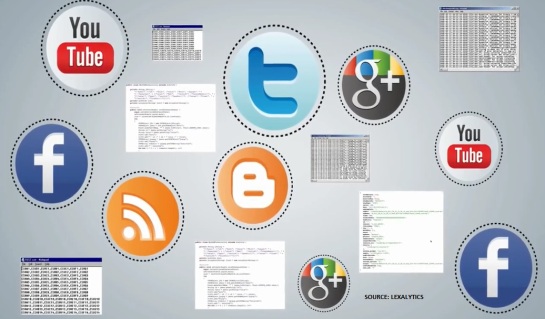How do you get to the next level of customer understanding? Next week’s Sentiment Analysis Symposium in New York offers an update on the latest in textual insight into consumers of products, financial services, healthcare, media, hospitality and much more.
There are three reasons why I’m looking forward to next week’s July 15-16 Sentiment Analysis Symposium in New York. First, recent briefings on the topic by SAS and Lexalytics have stoked my interest in new and maturing uses of sentiment analysis in several vertical industries. Second, applications appears to be moving beyond the basics of tracking mentions and thumbs-up/thumbs-down sentiments. And third, the event agenda promises a bevy of real-world examples on points one and two.
On the industry front, analysis of investor sentiment by financial services has emerged as a predictor of price movement, according to Seth Grimes, organizer of the Symposium and the deepest expert I know on text analytics and natural language processing (NLP). That trend inspired a July 16 workshop session on Sentiment Analysis for Financial Markets, with notable presentations including “Financial News Analysis for Equity and Credit” and “Extracting Intent & Influence for Predictive Trading Strategies.”
In another industry trend in sentiment analysis, the text-analytics experts at SAS tell me that manufacturers, healthcare payers and providers, and life sciences companies are getting increasingly sophisticated about sentiment analysis. In manufacturing, for example, a leading goal is to spot and fix product problems before they snowball into huge warranty liabilities. At the Symposium, for example, an exec from manufacturer Lenovo will present on “How to Detect Pervasive Issues Early Through Voice-of-the-Customer Analytics.” A Teradata exec will present on the topic of “Mining Text to Pinpoint Customer Reactions to Products.”
In healthcare, payers and providers are tapping into (aggregated and anonymized) electronic medical records to better understand patient behaviors and correlate that with outcomes to improve practices and process efficiency, according to SAS. Presenters at next week’s Symposium will focus on social and survey sources, with presentations on “Social Media Data Mining to Inform Health Behavior Change Campaigns” and “Voice of the Patient: Deriving Insights from Patient Satisfaction Surveys.
The state of the art in sentiment analysis is moving beyond just social listening for the sake of monitoring brand, product and competitor perceptions, according to Lexalytics. (An OEM supplier to customer-sentiment specialists including Sprinklr, Spredfast, Cision and Bottlenose, Lexalytics is the company behind the Salience text-analytics engine and Semantria NLP cloud service.) In one example of this maturation, some companies are mining the text around sales leads to gain insight on requested features. This helps marketing figure out what new or existing product features to highlight to help shorten sales cycles.
Contextual understanding of language is also improving as companies develop industry-specific applications, according to both Lexalytics and SAS. (The latter is preparing the latest release of SAS Contextual Analysis, which blends machine learning with subject-matter expertise to automate both content categorization and domain-specific sentiment analysis.) For example, “denial of service” has a very specific (and not necessarily bad or good) meaning in the context of networking security. By contrast, “hard bed” and “soft bed” are both almost always negatives in the hospitality industry, whereas “perfect mattress” or “comfortable mattress” is what hotel chains like to hear in reports from vendors such as Sprinklr.
If you want to dive into the details and hear what notable companies including Bloomberg, Instagram, Lenovo, and Verizon are doing to advance the state of the art, head to next week’s Sentiment Analysis Symposium in New York.



